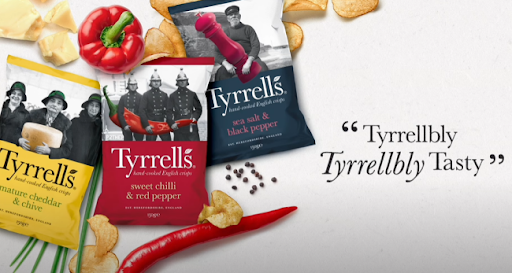How Tyrrells broke free from unprofitable price promotions | WARC | The Feed
The Feed
Read daily effectiveness insights and the latest marketing news, curated by WARC’s editors.
You didn’t return any results. Please clear your filters.

How Tyrrells broke free from unprofitable price promotions
Tyrrells, a premium crisp brand owned by KP snacks, broke away from a spiral of price promotions by reinvesting in its brand to regain market share and profitability.
Dan Winslet, global marketing controller, explained the company’s process of building “a brand that matched the quality of [its] products” at Advertising Week Europe.
Why it matters
KP found itself beholden to trade marketing promotions, having bought a once-strong but now-flailing brand. It’s a classic story of underinvestment, echoed by other (once) major brand owners that have experienced a similar fate, leading to an over-reliance on trade marketing and promotion at the point of sale, and competition on price rather than quality.
It’s a bad place to be. A recent Nielsen study found that 84% of price promotions are unprofitable, effectively subsidising existing sales. In the words of Les Binet, promotions are the “crack cocaine of marketing”, as it erodes the brand’s ability to raise prices – a vital effect of marketing in an inflationary environment.
The story
KP snacks acquired crisp brand Tyrrells in 2018, at a time when the brand had swung to a loss and it was chugging along on the latent brand equity of its previous presence, the AWE audience heard.
Kettle, its main competitor in the hand-cooked crisp category, had recently adapted its strategy to compete on volume rather than value; but, for Tyrrells, the economics of a low-price, high-volume strategy simply didn’t stack up and the business was losing money.
- Consumers “loved” the product, with taste tests indicating that the product was well liked but ultimately not worth paying for, Winslet explained.
- This left the brand producing premium crisps on its Herefordshire farm, but without being able to attract the premium pricing that would see the business break even. The brand was in a “race to the bottom”, hooked to the short-term drug of promotions”.
- In 2019, the brand raised its prices by around 30%, and soon lost an almost identical proportion of its sales, largely confirming the Nielsen finding above.
The remedy
Distinctiveness – or the lack thereof – was the real problem between the two major brands in the category, Winslet noted.
In response, the brand resolved to aim for a target market of over-45 buyers but with a much broader consumer appeal. The creative platform would play on the idiosyncratically English vibe of the brand, based around the catchy phrase (and product benefit) of being “Tyrrellbly Tasty”.
Results
Tyrrells was able to grow among the 45-65 age range but with wider appeal, Winslet explained:
- Category market share (premium sharing crisps) grew from 12.6% in 2019 to 15.3% in 2021, surpassing its main competitor.
- Annual sales between 2019 and 2021 grew 40%.
Bottom line
“People are prepared to pay a little bit more for a brand that has a brilliant product and a brilliant equity,” said Winslet.
Reported by SPT at Advertising Week Europe
Email this content
